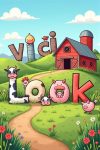
VICILOOK: TRANSFORMING RURAL AGRICULTURE THROUGH CONNECTIVITY, TRANSPARENCY, AND EMPOWERMENT
INTRODUCTION:
In a world where agriculture is the backbone of rural economies, many farmers still struggle with limited market access, inadequate resources, and a lack of direct connections to customers and support systems. Vicilook is here to change that narrative.
Imagine a digital hub where farmers are empowered to showcase their produce, connect with global markets, access essential resources, and directly engage with governments, NGOs, and local buyers—all while building trust through a robust verification process and real-time updates. Vicilook is not just a platform; it’s a transformative tool designed to eliminate losses, increase productivity, and drive sustainable development in rural communities.
Through innovation, transparency, and connectivity, Vicilook is revolutionizing how farmers interact with the world, ensuring they are equipped and empowered to thrive in today’s competitive agricultural landscape.
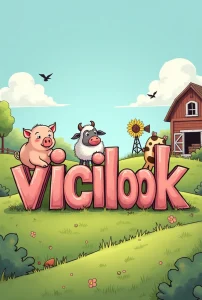
1. KNOWLEDGE SHARING AND CAPACITY BUILDING
Feature: Digital Resource Hubs
Vicilook can serve as a repository of localized agricultural knowledge, including modern farming techniques, pest control methods, soil fertility management, and weather prediction tips.
.
2. NETWORKING AND COLLABORATION
Feature: Community Networking Tools
Vicilook enables farmers to connect with agricultural experts, extension officers, cooperatives, and other farmers.
.
3. MARKET ACCESS AND ECONOMIC GROWTH (EXPANDED)
Feature: Comprehensive Marketplace and Digital Advertising Platform
Vicilook offers an integrated marketplace where verified farmers can showcase their produce, livestock, and agricultural products to a broad network of customers, both locally and globally. This ensures that farmers never experience losses due to a lack of customers or poor market access.
.
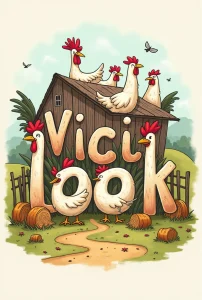
4. SECURITY AND RISK MANAGEMENT
Feature: Early Warning Systems and Incident Reporting
Vicilook can integrate real-time alerts for extreme weather, pests, or diseases and allow farmers to report incidents like theft or environmental hazards.
.
5. RESOURCE MAPPING AND OPTIMIZATION
Feature: Geographic Information System (GIS) Integration
With GIS, Vicilook can help map soil types, water sources, and optimal crop zones within rural areas.
.
6. ACCESS TO FINANCIAL SERVICES
Feature: Financial Inclusion Tools
Vicilook can connect farmers with microfinance institutions, insurance providers, and government subsidy programs.
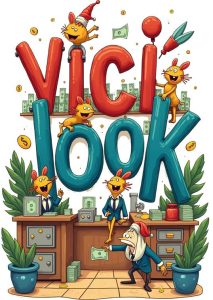
.
7. AGRICULTURAL INNOVATION AND TECHNOLOGY ADOPTION
Feature: Showcase for Emerging Technologies
Vicilook can promote new agricultural technologies such as solar-powered irrigation systems, automated pest control tools, or drought-resistant seeds.
.
8. COMMUNITY EMPOWERMENT AND ADVOCACY
Feature: Grassroots Advocacy Platforms
The platform can amplify farmers' voices, enabling them to engage with policymakers and advocate for infrastructure development, subsidies, and market reforms.
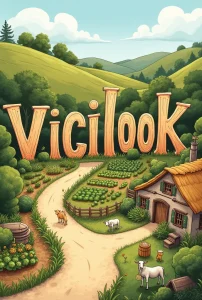
.
9. FACILITATING DIRECT CONNECTIONS WITH NGOS AND INTERNATIONAL ORGANIZATIONS
Feature: Centralized Hub for Farmer Verification and Collaboration
Vicilook can act as a bridge connecting rural farmers with NGOs, international agricultural organizations, and food solution-oriented companies.
.
10. ENABLING DIRECT CONNECTIONS WITH GOVERNMENT AND LOCAL INSTITUTIONS
Feature: Digital Integration with Government and Institutions
The verified farmer profiles on Vicilook, accessible through a unique, shareable link, can also be utilized by state, local, and federal government bodies, as well as local or state institutions, to establish direct digital connections with farmers.
.
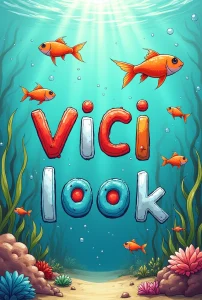
11. BOOSTING STAKEHOLDER CONFIDENCE THROUGH VERIFICATION AND TRANSPARENCY
Feature: Comprehensive Verification, Live Data, and Updates from Farmers
Vicilook enhances trust and confidence among local customers, state or local governments, and NGOs—both local and international—by offering:
- A Robust Verification Process.
- Dynamic and Real-Time Updates.
- Transparent Tracking.
.
In Epitome:
Vicilook is revolutionizing rural agriculture by creating a dynamic, transparent, and empowering digital ecosystem that connects farmers to essential resources, customers, and support systems. Through verified profiles, real-time updates, and a comprehensive marketplace, Vicilook ensures farmers can access global markets, secure funding, and adopt innovative agricultural practices.
Its cutting-edge features, such as live data tracking, GIS mapping, and community networking tools, not only boost productivity but also foster trust among local customers, governments, NGOs, and international organizations. By bridging the gap between rural farmers and the world, Vicilook guarantees economic stability, eliminates post-harvest losses, and drives grassroots development.
With Vicilook, rural farmers are no longer isolated—they’re at the heart of a thriving, connected agricultural network, ensuring a future of sustainable growth and prosperity.
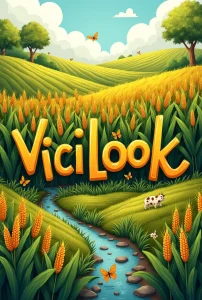
.
.
.
VICILOOK PAGE SETUP REQUIREMENTS FOR FARMERS
.
TO SETUP YOUR FARM WEBSITE ON VICILOOK, MOVE DOWN & FIND THE SECTION THAT IS ALL ABOUT YOUR FARM TYPE & SEND YOUR ANSWERS TO THE WHATSAPP NUMBER, +234 903 845 3516 , ACCORDING TO THE NUMBERING OF THE QUESTIONS.
.
For any questions or assistance, send a message to the WhatsApp number above.
.
NOTE: BY SUPPLYING US THE INFO BELOW, YOU APPROVE VICILOOK PUBLISHING YOUR FARM INFO ON ITS PLATFORM.
.
.
CROP FARMERS:
Purpose: To collect data about crop farmers and their farms for visibility, verification, and integration into the Vicilook platform.
.
SECTION 1: PERSONAL INFORMATION
- What is your full name?
- What is your gender?
- What is your date of birth?
- What is your contact number?
- Do you have an email address?
- What is your home address?
- What is the name of your community or village?
- Which state or province do you live in?
- What is your country?
.
SECTION 2: FARM INFORMATION
10. What is the name of your farm, if any?
11. Where is your farm located?
12. What are the GPS coordinates of your farm?(LEAVE THIS IF NOT AVAILABLE)
13. What is the nearest landmark to your farm? 14. What is the size of your farm in hectares or acres?
15. What is the ownership status of your farm (e.g., owned, leased, communal)?
16. What type of farming method do you use (e.g., organic, conventional, mixed)?
.
SECTION 3: CROP FARMING DETAILS
17. What are the main crops you grow?
18. Is your farming seasonal or year-round?
19. What is your average annual yield?
20. What is your planting and harvesting calendar (e.g., months of operation)?
21. Do you use an irrigation system? If yes, is it manual or automated?
22. Do you have access to fertilizers or pesticides? If yes, what type?
.
SECTION 4: MARKET & SALES
23. Who is the primary market for your produce (e.g., local customers, wholesalers, export)?
24. What challenges do you face in selling your crops?
25. What areas of support would you like (e.g., marketing, pricing, storage)?
.
SECTION 5: VERIFICATION INFORMATION
26. Who is the community leader or authority reference for your farm? What is their name and contact information?
27. Can you provide photos of yourself, your farm location, and farming activities?
.
.
.
LIVESTOCK FARMERS:
Purpose: To collect data about livestock farmers and their farms for visibility, verification, and integration into the Vicilook platform.
.
SECTION 1: PERSONAL INFORMATION
- What is your full name?
- What is your gender?
- What is your date of birth?
- What is your contact number?
- Do you have an email address?
- What is your home address?
- What is the name of your community or village?
- Which state or province do you live in?
- What is your country?
.
SECTION 2: FARM INFORMATION
10. What is the name of your farm, if any?
11. Where is your farm located?
12. What are the GPS coordinates of your farm? (LEAVE THIS IF NOT AVAILABLE).
13. What is the nearest landmark to your farm?
14. What is the size of your farm in hectares or acres?
15. What is the ownership status of your farm (e.g., owned, leased, communal)?
.
SECTION 3: LIVESTOCK FARMING DETAILS
16. What types of livestock do you raise?
17. How many livestock do you have?
18. What feeding methods do you use (e.g., grazing, stall feeding, mixed)?
19. What type of housing or facilities do you have for your livestock (e.g., open grazing, pens, sheds)?
20. How often do you use veterinary services (e.g., regularly, occasionally, never)?
21. What breeding practices do you use (e.g., natural breeding, artificial insemination)?
22. What challenges do you face in livestock farming?
.
SECTION 4: MARKET & SALES
23. Who is the primary market for your livestock or products (e.g., meat, milk, eggs, etc)?
24. What challenges do you face in selling your livestock or products?
25. What areas of support would you like (e.g., marketing, veterinary services, feed supply)?
.
SECTION 5: VERIFICATION INFORMATION
26. Who is the community leader or authority reference for your farm? What is their name and contact information?
27. Can you provide photos of yourself, your farm location, and farming activities?
.
.
.
AQUACULTURE FARMERS:
Purpose: To collect data about aquaculture farmers and their farms for visibility, verification, and integration into the Vicilook platform.
.
SECTION 1: PERSONAL INFORMATION
- What is your full name?
- What is your gender?
- What is your date of birth?
- What is your contact number?
- Do you have an email address?
- What is your home address?
- What is the name of your community or village?
- Which state or province do you live in?
- What is your country?
.
SECTION 2: FARM INFORMATION
10. What is the name of your farm, if any?
11. Where is your farm located?
12. What are the GPS coordinates of your farm? (LEAVE THIS IF NOT AVAILABLE)
13. What is the nearest landmark to your farm? 14. What is the size of your farm in hectares or acres?
15. What is the ownership status of your farm (e.g., owned, leased, communal)?
.
AQUACULTURE INFO
16. What types of fish or aquatic species do you farm?
17. What is the size of the water body you use for farming (e.g., ponds, tanks)?
18. What is the source of water for your farm (e.g., river, borehole, municipal supply)?
19. What feeding practices do you use (e.g., commercial feed, local feed)?
20. What is the duration of your production cycle?
21. What is your average annual production capacity?
22. What challenges do you face in aquaculture farming (e.g., disease, water quality)?
.
SECTION 4: MARKET & SALES
23. Who is the primary market for your aquatic products (e.g., local, wholesalers, export)?
24. What challenges do you face in selling your aquatic products?
25. What areas of support would you like (e.g., marketing, storage, feed supply)?
.
SECTION 5: VERIFICATION INFORMATION
26. Who is the community leader or authority reference for your farm? What is their name and contact information?
27. Can you provide photos of yourself, your farm location, and farming activities?
•••||•••
Vicilook for Agriculture, Vicilook for Farmers, Farmers, Agriculture, Grassroots, Grassroot Agriculture, Vicilook Uses, About Vicilook, What is Vicilook, Vicilook and NGOs, Vicilook and Farmers, Vicilook and Rural Development, Vicilook and Farmer, Vicilook and Rural Agriculture, Vicilook and Rural Impact


